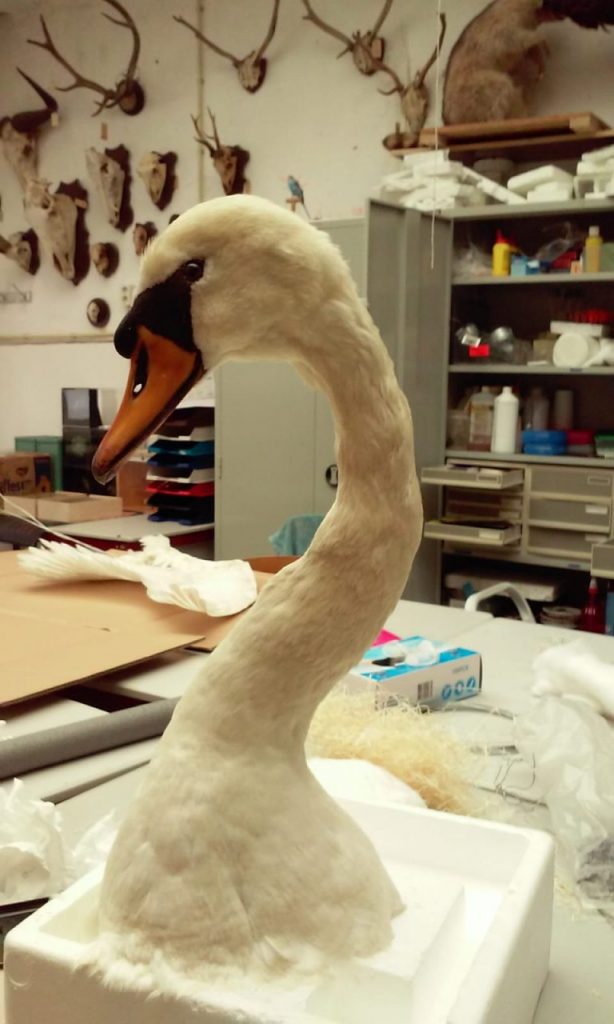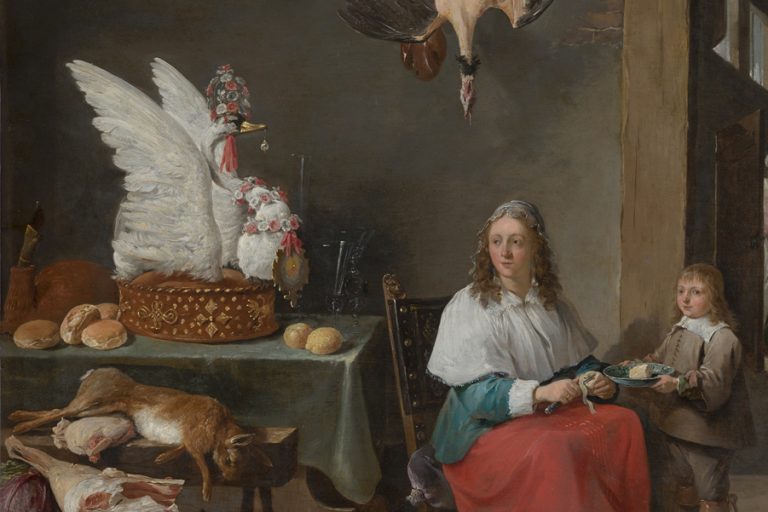A while ago, I started my project about recreating several historical pies with 16th and 17th century paintings as my source of inspiration. Thanks to the collaboration with the natural history museum De Bastei in Nijmegen, The Netherlands, we already have a magnificent pie with a pheasant on top. We regularly show him off during our 17th century cooking classes.
Some time ago, the museum got a dead swan brought in by the animal ambulance. They asked me if people also ate swan pies back in history. Yes they did! I did some research and eventually found some beautiful visual examples to take with me to the museum, so they had some reference material for stuffing the swan.
Inspiration for the Swan Pie
During my research, I have found a lot of extraordinary descriptions in culinary manuscripts about how to make a swan pie. They make me very curious about both the preparation and the way they must have tasted in those times. What they looked like can be seen in many paintings, most of them from the 16th and 17th century. The paintings picturing swan pies in this blog are the inspiration for the preparation of my own swan.
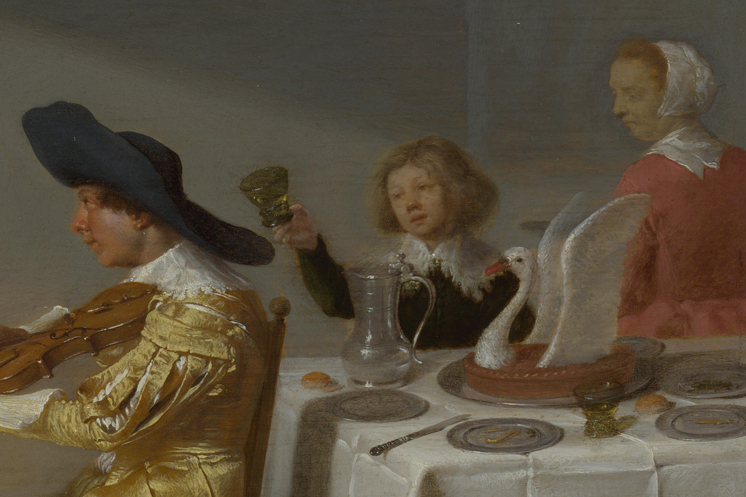
In the French cookbook Ménagier de Paris from 1393 we find various options for tackling the swan.
CIGNE. Plumez comme un poucin ou une oé, eschaudez, ou reffait; embrochiez, arçonnez en quatre lieux, et rostissiez à tout les piès et bec tout entier, et la teste sans plumer; et mengié au poivre jaunet.
Item, qui veult, l’en le dore.
Item, au tuer, soit fendu de la teste jusques aux espaules.
Item, sont aucune fois escorchiés et revestus.
CIGNE REVESTU en sa pel à toute la plume. Prenez-la et l’enflez par entre les espaules, et le fendez au long du ventre: puis ostez la pel à tout le col couppé emprès les espaules, tenant au corps les piés; puis mettre en broche, et l’arçonnez et dorez. Et quant il sera cuit, soit revestu en sa pel, et que le col soit bien droit ou plat; et soit mengié au poivre jaunet.
An example of a recipe for a swan pie is from Robert Smith. He writes his Court cookery: or, The compleat English cook in 1725, which features a swan pie.
A Swan Pie, to be eat cold.
Skin and bone your Swan; lard it with Bacon, and season it with Pepper, Salt, Cloves, Mace, and Nutmeg, to your Palate, and with a few Bay-leaves powder’d lay it in the Pie; stick it with Cloves; lay on butter, and close the Pie: When it is bak’d, and half cold, fill it up with clarify’d Butter.
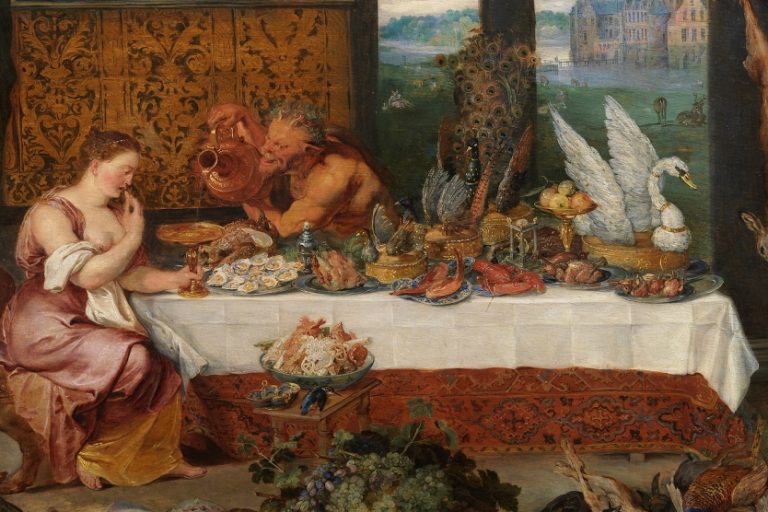
The Stuffed Swan
The size of a swan deeply impressed me. I usually see these gorgeous animals from a far distance. Up close I notice just how strong their necks are, and how big their wings! Sita and Rob from the museum carefully removed the neck, wings, and tail from the swan. They have been washed and dried after. Because the wings were so big, we decided to remove the lower part of them because I would not have been able to use her during my cooking classes otherwise. To speed things up a little, we used hairdryers to dry the feathers more quickly, which turned the wings and neck all fluffy and soft.
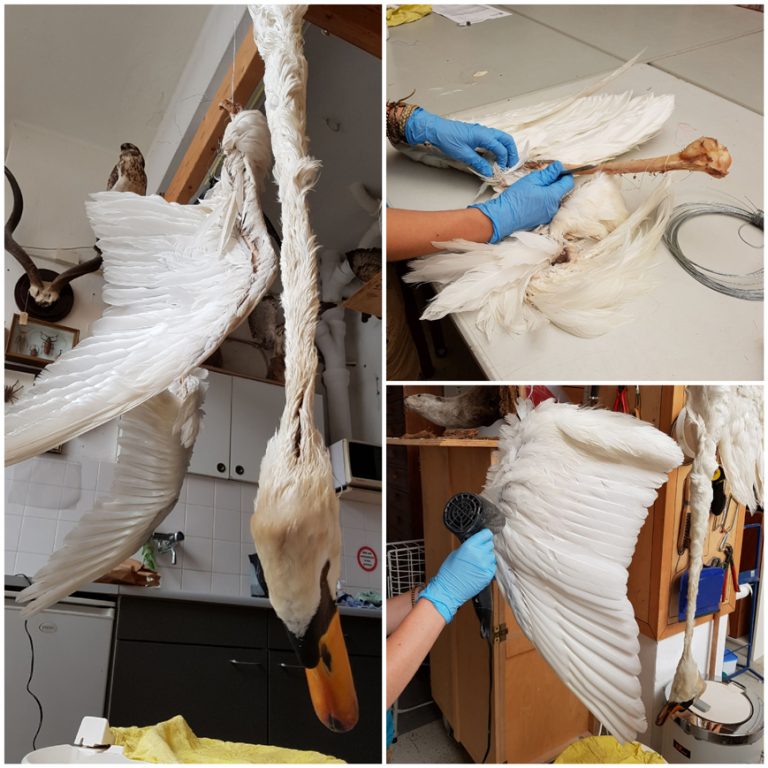
The biggest challenge was placing the neck and the head. They are so big, that we had to find the exact right balance so it would not topple over. Many paintings show that the neck makes a turn so the head is right above the place where they put it in the pie. Rob and Sita did the same and it turned out exactly the way we wanted to. The only thing left was letting her dry!
